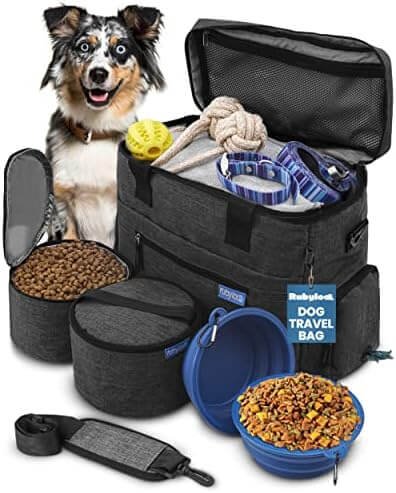Table of Contents
The Importance of Quality Pet Nutrition
Providing high-quality nutrition is essential for the health and well-being of pets, particularly dogs and cats. Just as humans require a balanced diet rich in essential nutrients, our furry companions thrive on well-structured meals that support their developmental and lifelong needs. When considering pet nutrition, it is essential to understand the various types of food available, including kibble, wet food, and even treats, each offering unique benefits.
Kibble, or dry food, is a popular choice among pet owners due to its convenience and longer shelf life. It typically contains essential nutrients, including proteins, carbohydrates, fats, vitamins, and minerals. However, it is crucial to choose a kibble formulated specifically for your pet’s age, size, and health needs. On the other hand, wet food, characterized by its higher moisture content, can be a palatable option for picky eaters, ensuring adequate hydration. Wet food can also be beneficial for pets with certain health issues. Regardless of the type of food, the primary focus should be on the quality of the ingredients and the nutritional balance they provide.
Treats also play a significant role in a pet’s nutrition, serving as rewards and training tools. However, they should be given in moderation and should complement a balanced diet rather than replace essential meals. High-quality treats made from natural ingredients can support dental health and enhance the overall eating experience for pets.
Ultimately, a well-rounded diet is vital for maintaining a pet’s overall health, energy levels, and longevity. Proper nutrition aids in weight management, enhances immune function, and can even contribute to a shiny coat. By investing in quality pet food and being mindful of dietary choices, pet owners are taking significant steps toward ensuring their beloved companions lead happy, healthy lives.
Keeping Pests at Bay: Flea & Tick Control
The presence of fleas and ticks poses significant health risks to pets, making effective pest control an essential aspect of pet care. Fleas and ticks are not just nuisances; they can lead to various health issues including skin irritations, infections, and more serious conditions such as Lyme disease and anemia. Therefore, understanding and implementing appropriate flea and tick control measures is crucial for maintaining the well-being of your furry friends.
There are various types of flea and tick prevention medications available on the market today. These include topical treatments, oral medications, and even insecticidal collars. Topical treatments are applied directly to the skin, providing protection for a specified duration, typically around a month. Oral medications, which are ingested, work systemically, ensuring that fleas and ticks are eliminated upon biting. Collars release chemicals that repel or kill pests over an extended period. When choosing a product, it’s essential to consider your pet’s size, age, and any pre-existing health conditions. Consulting with a veterinarian can provide valuable insights into selecting the most suitable flea and tick control solution for your specific pet.
Moreover, aside from using medications, it’s important to maintain a hygienic environment to minimize the risk of infestation. Regularly bathing and grooming your pet can help in identifying and removing any pests before they proliferate. Additionally, washing your pet’s bedding and vacuuming living spaces frequently will reduce potential breeding grounds for fleas and ticks. Incorporating yard maintenance into your pest control routine—such as mowing the lawn regularly and eliminating tall grasses and shrubbery—can further prevent these pests from invading your home. By combining appropriate medications with preventive measures and proper environmental care, pet owners can protect their furry companions effectively from the threats posed by fleas and ticks.
Essential Medications for Your Pet’s Health
Ensuring the health and well-being of pets involves more than just providing food and shelter; it also requires appropriate medications for their specific needs. Medications for pets can be classified into two main categories: prescription and over-the-counter (OTC). Prescription medications are typically given to pets under the direct supervision of a veterinarian and are used to treat various conditions such as infections, allergies, and chronic diseases. On the other hand, OTC medications, including supplements and flea and tick treatments, can often be purchased without a prescription but should still be used with caution.
Commonly utilized health products include antiparasitic medications, which protect pets from fleas, ticks, and worms. These preventives are crucial for maintaining a pet’s health as they minimize the risk of infections and infestations. Additionally, pain relief medications are often prescribed post-surgery or for chronic pain relief in older pets. In such cases, the proper dosage and type of medication must be determined by a veterinarian to prevent adverse effects.
Moreover, vaccinations play a fundamental role in preventive care for pets. Standard vaccinations include rabies, distemper, and parvovirus, which help protect pets against serious diseases. Regular health checks allow veterinarians to tailor a vaccination schedule that meets the needs of each individual pet, considering their age, health status, and lifestyle.
It is crucial to consult a veterinarian before administering any medications, whether prescription or OTC. This not only ensures the safety and efficacy of the treatment but also facilitates the identifying of underlying health issues that may not be immediately apparent. By prioritizing preventive care and adhering to a regular check-up schedule, pet owners can significantly enhance their furry friends’ quality of life and longevity.
Grooming Essentials for a Happy Pet
Grooming plays a pivotal role in maintaining the hygiene and overall health of pets. Regular grooming not only keeps a pet looking good but also serves as an opportunity for pet owners to bond with their furry companions. It facilitates a thorough inspection of the pet’s skin and coat, potentially allowing for the early detection of health issues, such as fleas, ticks, and skin infections.
To effectively groom pets, it is essential to have the right grooming supplies on hand. Key items include pet-specific shampoos that cater to different coat types and sensitivities. For instance, hypoallergenic shampoos are beneficial for pets with sensitive skin, while other formulas may focus on reducing shedding or combating odors. Additionally, choosing the appropriate brush is crucial; different breeds have distinct grooming needs. Long-haired pets may require slicker brushes, while short-haired dogs can benefit from bristle or rubber brushes.
Apart from shampoos and brushes, other grooming tools such as nail clippers, combs, and ear cleaners are vital. When selecting nail clippers, ensure they are designed for your pet’s size and breed, as this promotes safe and effective trimming. As for ear care, using a soft cotton ball along with a veterinarian-recommended cleaning solution can help maintain ear hygiene.
Timing and technique are equally important in grooming. Establishing a grooming routine, whether it be weekly or bi-weekly, helps reduce the risk of matting and controls shedding. When grooming pets, it’s crucial to remain patient and gentle, allowing the pet to become comfortable with the process. This not only enhances the grooming experience but also deepens the bond between pet and owner.

Creating a Cozy Space: Pet Beds and Sleeping Options
In conclusion, investing in grooming essentials is imperative for ensuring a happy, healthy pet. Regular grooming helps prevent potential health issues and fosters a close relationship between pets and their owners.
Providing a comfortable sleep environment is essential for the overall well-being of pets. The type of bed chosen for a pet can have a significant impact on their physical comfort and mental health. Various types of pet beds are available in the market to cater to different species and sizes of pets, including dogs, cats, and small animals. One must consider these factors to ensure that the selected bed meets the specific needs of the pet.
When choosing a pet bed, it is crucial to assess the pet’s size and sleeping habits. For larger breeds, orthopedic beds might be ideal as they offer additional support for joints and muscles. Meanwhile, smaller pets may prefer plush beds or simple blankets tucked into a basket. Cats, known for their love of warmth and coziness, often appreciate enclosed options like cat caves, while dogs might benefit from open beds that allow them to stretch out. The material and design should also correspond to the pet’s preferences, as some may prefer soft fabrics while others are more tolerant of polyester or canvas.
Beyond size and material, considerations such as the bed’s ease of cleaning and durability should not be overlooked. Beds that are machine washable or have removable covers can be particularly beneficial in maintaining hygiene. Creating a designated sleeping area with a appropriate bed not only provides comfort, but it can also reduce anxiety and promote better sleep patterns, enhancing the pet’s mental health. A dedicated space where pets can retreat to feel safe and secure contributes positively to their overall quality of life.
Incorporating a cozy bed into your pet’s environment is a simple yet effective way to promote their health and happiness. Ensuring that it fits both their physical requirements and personal preferences lays the foundation for a restful sleep and a happy pet.

Engaging Your Pets: The Best Toys for Dogs and Cats
Playtime is a crucial component of a pet’s daily routine, providing opportunities for both physical activity and mental stimulation. Engaging dogs and cats with appropriate toys not only fosters their natural instincts but also helps to form a stronger bond between pet and owner. Investing in a variety of toys tailored to your pet’s preferences is essential for their happiness and overall well-being.
For dogs, chew toys serve an important function beyond mere entertainment. They can help maintain dental health by reducing plaque and tartar buildup while providing necessary outlets for chewing that can prevent destructive behaviors. Popular options include rubber toys, rawhide sticks, and dental chews, catering to different sizes and chewing habits. Additionally, interactive toys, such as those that dispense treats or require problem-solving to access a reward, can keep dogs engaged for longer periods, challenging their minds while encouraging physical activity.
Fetch toys, including balls and frisbees, play a pivotal role in promoting exercise. Games of fetch can stimulate a dog’s natural retrieving instincts, leading to a healthy outlet for their energy. By varying the type of fetch items and incorporating different games, owners can keep their pets continuously engaged and physically active.
Similarly, cats benefit greatly from engaging toys that mimic their instinct to hunt. Popular options include wand toys that entice cats to jump and pounce, as well as laser pointers for those that enjoy chasing bright lights. Puzzle toys that contain treats also encourage mental stimulation, providing a satisfying challenge for your feline friend. Toys that engage both physical and mental abilities can effectively deter boredom-related behavioral issues.
In conclusion, understanding the importance of playtime in pets’ lives and providing various engaging toys can significantly enhance their quality of life. By selecting toys appropriate for your dog or cat, you support their health, happiness, and strengthen the bond you share together.
Traveling with Pets: Carriers and Safety
Traveling with pets requires careful planning and the right equipment to ensure the safety and comfort of your furry companions. One of the most essential items for pet travel is a suitable carrier or travel crate. The selection of an appropriate pet carrier is vital as it provides a safe space for your pet while also complying with travel regulations, especially when using air travel. Pet carriers come in various types, including soft-sided carriers, hard-shell crates, and backpack-style carriers, each serving distinct purposes based on your travel needs and the size of your pet.
When choosing a carrier, it is crucial to consider the size and weight of your pet. A carrier should allow your pet to stand, turn around, and lie down comfortably. Additionally, it is advisable to check the material of the carrier; mesh panels for ventilation, sturdy zippers, and durable materials can enhance the overall functionality and safety of the carrier. Furthermore, ensure that the carrier meets the guidelines provided by airlines or other travel services, as non-compliance may result in issues when boarding.
Preparing your pet for travel is equally important. Acclimating your pet to the carrier before a journey can lessen anxiety. Start by allowing your pet to explore the carrier at home, rewarding them with treats or toys to create positive associations. For longer trips, ensure your pet is well-hydrated and has had a chance to relieve themselves before embarking on your journey. Secure the carrier in a way that prevents it from moving excessively during travel, as sudden shifts can cause distress or injury to your pet.
In conclusion, investing in the right pet carriers and following these safety guidelines can significantly enhance the travel experience for both you and your pet. Ensuring that your furry friend is safe, comfortable, and well-prepared for travel helps foster a positive environment, making your journeys more enjoyable together.
